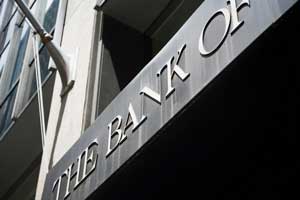The ABCs of HHI: Competition and Community Banks

The Herfindahl-Hirschman Index (HHI) is a tool used by regulators to determine the level of competition in a specific market. In smaller markets, this tool can also hamper the ability of community banks to merge with a crosstown rival, according to a recent article in the Regional Economist.
Senior Economist Andrew Meyer examined this mathematical formula, which regulators like the Federal Reserve and the Department of Justice (DOJ) use to decide whether they need to subject a proposed merger to additional scrutiny.
If the HHI value for a specific market exceeds 1,800, that market can be considered “stuck”—that is, merger activity is severely limited unless there are extenuating circumstances.
“The number of such stuck markets had been on the decline for years but has started to climb back up in the last decade,” the author wrote. “This article does not take a policy position, but rather seeks to explain the regulation and some of the economic and social consequences stemming from it.”
Calculating HHI
In the early 1960s, the Supreme Court ruled that all bank mergers that result in decreased market competition—measured by bank deposit share in the affected market—be subject to review and approval by the DOJ and the Federal Reserve.
The HHI is used in a variety of industries. In the case of banking, the HHI is calculated by summing the square of the share of deposits for each bank within a particular geographical area. For example, if there were five banks operating, each holding a 20 percent market share, the HHI would be 2,000. If the market had only one bank (a monopoly), the figure would be 10,000.
Under its guidelines, the DOJ has three key ranges for HHI values:
- Less than 1,000—not concentrated
- 1,000 to 1,800—moderately concentrated
- Greater than 1,800—highly concentrated
“Mergers that would result in an increase in a market’s HHI by 200 points or more and result in the market’s HHI exceeding 1,800 generally require analysts to conduct additional, customized analysis to identify potential mitigating factors before a determination can be made regarding the permissibility of the merger,” Meyer wrote.
Such mitigating factors include whether there are other nonbanking institutions, such as thrifts or credit unions, and whether a merger involving a failing bank would be better for local consumers despite the loss of competition.
How Competitive Is the U.S. Banking Market?
The size of a banking market isn’t formally defined. Instead, regulators determine the size of the market on a case-by-case basis, the author noted.
To estimate the level of competitiveness in the U.S., Meyer calculated the HHI for counties in a metropolitan statistical area (MSA) or for individual counties that aren’t part of an MSA. The data spanned 1994 to 2017.
For all U.S. banking markets, the average HHI was 3,468 in 2017, up from 3,316 in 2006.
The author then looked at the percentage of banking markets that would be considered highly concentrated—those with an HHI above 1,800. These markets would be considered “stuck.”
Meyer found that 78.8 percent of U.S. banking markets were highly concentrated, up from 75.3 in 2009.
However, the percentages are even higher for rural markets. In 2017, almost 89 percent of rural banking markets were highly concentrated.
“While the purpose of this article is not to argue for or against greater flexibility in the ability of small community banks to merge, it is clear that a complete lack of flexibility will result in few within-market mergers for smaller markets,” Meyer wrote.
For many markets, the only eligible buyers will be out-of-market institutions, which may not be well-versed in the intricacies of the new market or have as much vested interest in the health of the community as a truly local bank with close ties to residents, the author posited.
“The fact that the number of stuck markets is so high warrants further research and policy analysis,” Meyer concluded.
Additional Resources
- Regional Economist: Market Concentration and Its Impact on Community Banks
- On the Economy: Why Are Banks Shuttering Branches?
- On the Economy: A Glimpse into Banking's Future by Looking at the Past
Citation
ldquoThe ABCs of HHI: Competition and Community Banks,rdquo St. Louis Fed On the Economy, June 11, 2018.
This blog offers commentary, analysis and data from our economists and experts. Views expressed are not necessarily those of the St. Louis Fed or Federal Reserve System.
Email Us
All other blog-related questions

